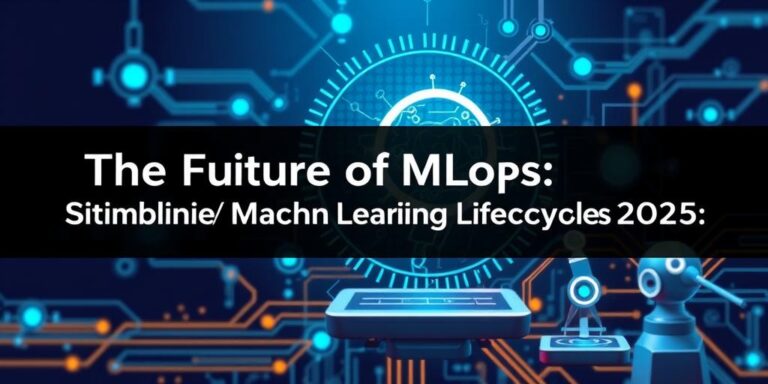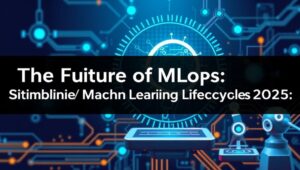The Future of MLOps: Streamlining Machine Learning Lifecycles (2025)
Machine Learning Operations (MLOps) is rapidly evolving. As we look towards 2025, the focus is on streamlining machine learning lifecycles to achieve greater efficiency, scalability, and reliability. This post explores the key trends and technologies shaping the future of MLOps.
What is MLOps?
MLOps is a set of practices that aims to automate and streamline the entire machine learning lifecycle. It encompasses data engineering, model development, deployment, and monitoring, ensuring that machine learning models deliver business value consistently. Think of it as DevOps, but for machine learning.
Key Trends Shaping MLOps in 2025
Several significant trends are poised to redefine MLOps in the coming years:
- Automation at Scale: Automation will extend beyond basic CI/CD pipelines. Automated feature engineering, model selection, and hyperparameter tuning will become standard, reducing manual intervention and accelerating experimentation.
- Edge MLOps: Deploying and managing machine learning models on edge devices will gain prominence. This involves optimizing models for resource-constrained environments and ensuring real-time inference capabilities at the edge.
- Explainable AI (XAI): As regulatory scrutiny increases, understanding and explaining model decisions will be crucial. XAI techniques will be integrated into MLOps workflows to ensure transparency and compliance.
- Federated Learning: This approach enables training models on decentralized data sources without directly accessing the data. It addresses privacy concerns and unlocks new possibilities for collaborative model development.
- MLSecOps: Security will become a core component of MLOps. Implementing robust security measures throughout the machine learning lifecycle is essential to protect against adversarial attacks and data breaches.
Technologies Driving the Future of MLOps
Several technologies are at the forefront of the MLOps revolution:
- Kubernetes: This container orchestration platform simplifies the deployment and management of machine learning models at scale.
- Serverless Computing: Serverless functions provide a scalable and cost-effective way to deploy machine learning models for inference.
- Feature Stores: Centralized repositories for managing and serving features consistently across the machine learning lifecycle.
- ML Metadata Stores: Tools for tracking and managing metadata associated with machine learning models, datasets, and experiments.
- Monitoring and Observability Tools: These tools provide real-time insights into model performance, data quality, and system health.
Best Practices for Future-Proofing Your MLOps Strategy
To stay ahead in the rapidly evolving field of MLOps, consider these best practices:
- Embrace Automation: Automate repetitive tasks to free up data scientists and engineers for more strategic work.
- Prioritize Security: Integrate security best practices into every stage of the machine learning lifecycle.
- Focus on Explainability: Implement XAI techniques to ensure transparency and build trust in your models.
- Invest in Monitoring: Continuously monitor model performance and data quality to detect and address issues proactively.
- Foster Collaboration: Encourage collaboration between data scientists, engineers, and business stakeholders.
Conclusion
The future of MLOps is about streamlining machine learning lifecycles to deliver greater value and impact. By embracing automation, prioritizing security, and focusing on explainability, organizations can unlock the full potential of their machine learning investments. As we move closer to 2025, staying informed about emerging trends and technologies is crucial for success in the dynamic field of MLOps.




